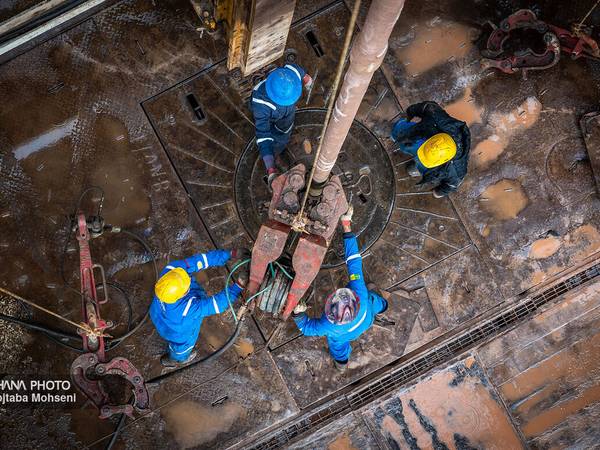In recent years, Iranian authorities have often announced significant discoveries of oil and gas reserves, but, in reality, the government has faced tremendous challenges – often self-inflicted – in actually extracting these resources.
In February 2017 authorities revealed the presence of two billion barrels of shale oil reserves in the western province of Lorestan. To try and ascertain the feasibility of extraction and develop efficient technologies, the governmental National Iranian Oil Company (NIOC) collaborated with universities on a pilot project. This effort was likely meant to showcase Iran's dedication to expand its energy sources.
The NIOC’s Exploration Manager Mehdi Fakour later alleged that ten locations containing shale oil resources had been found and confirmed. Confident in the ability of the NIOC’s extraction model, Fakour told the IRGC-affiliated Tasnim news agency that over 2.5 billion barrels equivalent of oil were added to Iran's reserves through new discoveries in 1402.
Though the discovery of shale oil reserves in Lorestan province could offer significant opportunities for Iran's energy sector, it also presents substantial obstacles for Tehran.
Iran’s vast challenges
Iran encounters numerous challenges in its quest for shale oil production. Obtaining the necessary technological expertise stands out as a major hurdle. While the current pilot project seeks to address this issue, Iran must also pursue technology transfer from more experienced nations to fully capitalize on its resources. Moreover, the economic feasibility of shale oil production is uncertain, underscoring the need for a thorough analysis of both technical capabilities and economic factors.
International sanctions have intensified Iran's pre-existing challenges in developing its oil sector, especially concerning its shale oil deposits. The regime’s ongoing proxy conflict with Israel has not only contributed to regional volatility and instability but has also impeded Iran's ability to attract international investment and technology from countries like Israel and the US.
Additionally, a significant challenge stems from the scarcity of water, which is crucial for shale oil production. To address this issue, Iran must explore water-saving technology and techniques. This entails investing in strategies to conserve water and adopting technology for recycling and reusing water resources throughout the extraction process.
Does Tehran see major potential in shale oil?
The discovery of shale oil presents a tremendous opportunity – if Tehran genuinely wants to utilize its energy resources to foster prosperity and enhance its global influence. This finding could enable the country to diversify its energy portfolio and diminish its dependence on traditional oil supplies.
Successfully exploiting shale oil deposits could increase Iran's oil production capacity, thereby compensating for declines resulting from depletion and mismanagement of existing reserves and the impact of sanctions. Increased production through successful shale oil exports could significantly bolster economic development. Exploiting these assets can enhance Iran's energy security by reducing its reliance on imported oil and gas.
Iran’s exaggerated claims and technical limitations
It’s important to note that Iran's actual claim of discovering significant shale oil deposits in Lorestan lacks any independent validation.
That coupled with the Iranian authorities’ long history of exaggerating energy reserves, casts a real shadow on the potential of any potential find in Lorestan.
So far, the NIOC’s ongoing pilot study has encountered numerous hindrances, including technological restrictions, economic limitations, and geopolitical complexities.
Unlocking Iran’s shale oil reserves would require Tehran to face and overcome these major roadblocks, and given the existing multi-layered constraints – skepticism is warranted.
Whether Iran’s government is capable of effectively tapping into Lorestan’s shale oil deposits, improving its people's well-being, remains to be anyone’s guess at this stage.
